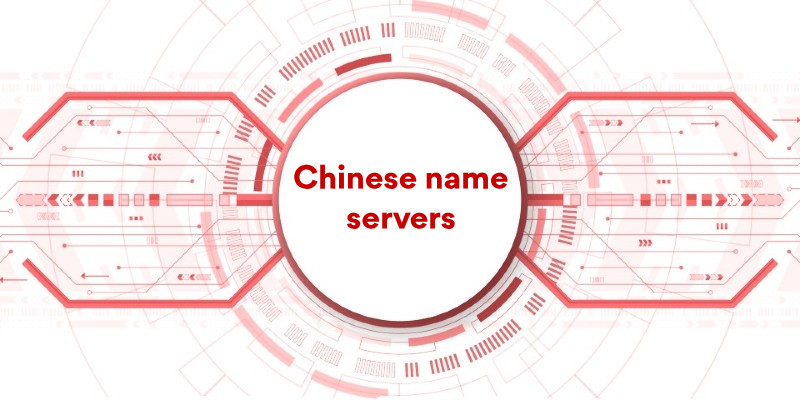


Domain name for Chinese market
As you may be aware, there are two main parts to a domain name you need to consider when making a purchase: -
- TLD (Top Level Domain) is the part domain name that comes after the "DOT", e.g. .com, .net, .etc.
- Domain is that come before the TLD. ", e.g. "mydomain" in mydomain.com
- The Domain name is the domain + TLD., e.g. mydomain.com
Top-level domain (TLDs)
TLDs are in three groups as follows;
Country Code Top-Level ccTLDs
- These are two-letter TLDs assigned to specific countries or territories, such as .uk (United Kingdom), .cn (China), and .de (Germany).
- Managed by local authorities or organisations specific to the country or territory.
- Today, most countries want these ccTLDs to be used by businesses and residents of their country, and China is no exception.
Sponsored gTLDs (sTLDs)
- These are TLDs have a sponsor representing a specific community, industry, or sector.
- Example: .edu (for U.S. educational institutions), .gov (for U.S. government entities), .museum (for museums).
- Sponsors set policies and manage registrations for their specific communities.
Unsponsored gTLDs (uTLDs)
- These are generic TLDs managed by registries accredited by ICANN and open to general public use.
- Example: .com, .net, .org, .xyz, .online, .info.
- No specific community or restrictions—available for commercial or personal use.
Within these groups, there are also second-level ccTLDs. Here are some examples for .cn:
- .com.cn – This is for commercial entities similar to .com but specifically for businesses operating in China.
- .net.cn – For network-related organisations similar to .net.
- .org.cn – For non-profit organisations or entities similar to .org.
- .gov.cn – For government institutions in China.
- .edu.cn – For educational institutions in China.
- .mil.cn – For military organisations in China.
Again, most countries want these ccTLDs to be used by businesses and residents of their country, and China is no exception.
Traditionality, the commonly used TLD in China are;
- .com
- .cn
- .com.cn (original Chinese TLD)
For a while now, you can register International Domain names (IDN) in different language characters, e.g., Russian, Arabic, Simplified Chinese, Traditional Chinese, etc.
In the case of Chinese characters, there are Chinese ccTLDs are available, e.g.;
- .中国 is.CN in Simplified Chinese
- .中國 is.CN in Traditional Chinese (Cantonese / Taiwanese)
- .公司 is.COM in Simplified Chinese
- .网络 is .NET in Simplified Chinese
ccTLDs are supplied and managed by the local authorities. The Chinese local authorities manage the above examples.
The domain can also be in the Chinese language e.g. 我的域.com (domain format in the Chinese language “mydomain”). You can purchase a domain in Chinese from any domain supplier supporting the Chinese language. The authorities manage TLD.
Examples;
- mydomain.com (standard English domain name format)
- mydomain.cn (standard English domain name format)
- mydomain.com.cn (standard English domain name format)
- 我的域名.com (domain format in the Chinese language)
- 我的域名.cn (domain format in the Chinese language)
- mydomain.中国 (TLD in the Chinese language)
- 我的域名.中国 (TLD and domain in the Chinese language)
Having shown that you can use the Chinese language in domains and TLDs, I would not recommend it. Its use is limited; only people who can write Chinese on a mobile or tablet, etc., can use the domain name.
Chinese ccTLDs management
The management of the Chinese ccTLD is the responsibility of the Chinese authorities.
In 2013, Chinese authorities fully automated purchasing Chinese domain names. While many international domain suppliers offer Chinese ccTLDs, a licensed Chinese supplier is involved in the background when buying a Chinese ccTLD. It's important to note that only an authorised Chinese business can register a Chinese ccTLD.
In 2022, Chinese authorities will only allow Chinese companies to own Chinese TLDs. This did not affect Chinese domain ownership at this stage, given that Chinese business agents only own the Chinese TLDs. The problem today is that if you use the Chinese TLD for overseas business, the Chinese authorities can close the domain name.
The Chinese authorities apply the Chinese Internet Content Provider (ICP) rules and regulations if you use the domain name to publish inside China. When writing this paper, the ICP rules and regulations do not apply if you use Chinese ccTLDs outside China.
The Chinese authorities could stop using a Chinese domain name if they wish. Therefore, we recommend you not publish inappropriate materials for the Chinese market.
What TLD should you use for the Chinese market?
We recommend not using a Chinese ccTLD. You may be fined and unable to use them in the future.
Use an unsponsored TLD, e.g. .store, .biz, etc. Use a TLD known to the Chinese market. One of the most popular at the monument: .icu (you say as letters – I see you!).
Please make sure you purchase the domain name from a Chinese supplier. This will give you access to national Chinese DNS. (Please note: most domain name suppliers claiming to be Chinese do not use access to national Chinese DNS).
Please have a look at the following.
Access to China local Chinese name servers and DNS
Brand registration checks
We always recommend that you register the company trademarks and brand name(s), in this case, in China.
When publishing a domain name in China, the local authorities will check the Chinese brand registration database to ensure that your domain name is not a registered brand. If it is, regardless of your domain name ownership, you will not be allowed to use this domain name in China. You can still use the Chinese TLD name outside China.
Chinese sub-domain names
Many businesses in China run on sub-domain names. One of the most significant users of sub-domain names is the Alibaba B2B trade engine and Chinese e-commerce e-mail platforms.
Example;
- https://sdzhongcha.en.alibaba.com - Shandong Zhonghu Heavy Industry (Alibaba)
- https://uk1147254256gmmp.trustpass.alibaba.com - J&D Gold Ltd (Alibaba)
- https://uk1005252631.trustpass.alibaba.com - Ancient Wisdom Marketing Limited (Alibaba)
- https://ellaskitchen.tmall.hk - Ella baby food (TMall)
- https://domojj.world.tmall.com - Domo (TMall)
Using sub-domain names has allowed businesses to publish online in Chinese using the Chinese platform, e.g., Alibaba. Therefore, they are using the internet service provider's ICP. The ICP checks the internet contents and thus applies the ICP rules.
Our Chinese domain name recommendations
Meaningful domain names are valid for social media and search engine optimisation (SEO). In China, a local domain name will be a priority in search engines.
On the negative side, many different types of domain names and TLDs are available, and in China, most domain names on business cards, websites, etc., have been replaced with QR codes. Therefore, people do not need to remember domain names. The brand name is far more critical in China.
China’s most successful domain names have a cross meaning between Pinyin and English.
There are four options;
- Your company name/brand—unless the name is already known to the Chinese market, people will not search for it in Chinese search engines. Unless you plan to promote your company/brand name in China, using this name alone will not create new traffic from Chinese search engines. Purchasing your company/brand name Chinese domain name will protect your interests in the future if your name becomes known in China.
- Descriptive name - English - a name that contains elements of business, e.g. ukproperly.tld In this example, we recommend English. English is the first overseas language of China (It has nothing to do with the UK; this influence of the USA on worldwide business!). Chinese search engines SEO will list your domain name if it is a meaningful word(s).
- Descriptive name - Pingyin - The same as the above. In these cases, use the Pinyin words, e.g. yingguozhengque.tld
- Descriptive name – Chinese - The same as the above. In these cases, use the Chinese words, e.g. 英国正确.tld
Options 2 and 4 will help search engine SEO. The three options will help people understand your business from the outset. Option 2 is our recommendation unless your products/services brand or company is known in China, in which case option one is recommended over option 2. Please note: Option 4 is not widely used in China.
Please be careful when using country names in domain names. If you plan to use your domain name in China, the ICP certificate is often refused. However, you can use the domain name outside of China.
Last modified:V3.4 - October 2024












